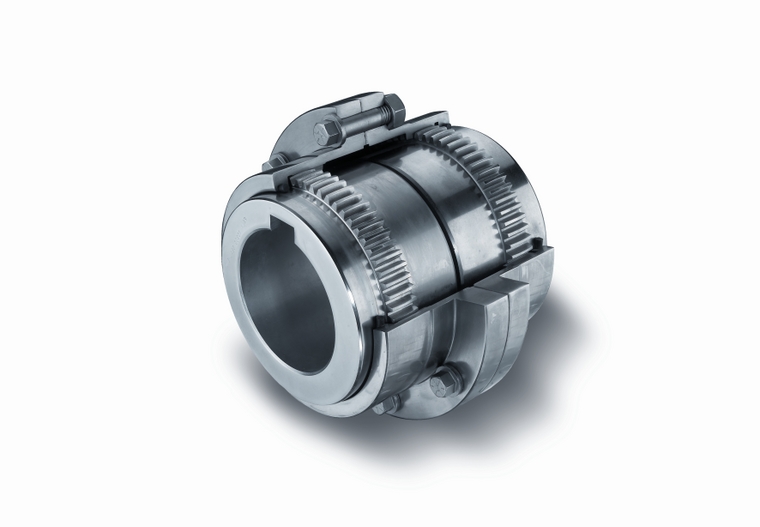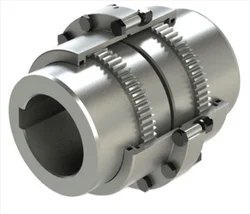Product Description
Rigid Coupling Transmission Parts Couplings Shaft Metal Stainless Steel Tooth Drum Curve NM Chain Shaft Fexible Type of Rubber Best Manufacturers Rigid Coupling
Application of Rigid Coupling
Rigid couplings are used to connect 2 shafts that are perfectly aligned. They are made up of 2 flanges, 1 mounted on each shaft. The flanges are then bolted together, which ensures that the shafts are held in place and cannot move relative to each other.
Rigid couplings are used in a wide variety of applications, including:
- Machine tools: Rigid couplings are used in machine tools to connect the motor to the cutting tool. This allows the cutting tool to operate at a high speed and torque, which is necessary for cutting through tough materials.
- Wind turbines: Rigid couplings are used in wind turbines to connect the blades to the generator. This allows the generator to generate electricity at a controlled speed and torque, which is necessary for providing power to homes and businesses.
- Robotics: Rigid couplings are used in robotics to connect the motor to the robot’s joints. This allows the robot to move its joints at a controlled speed and torque, which is necessary for performing tasks such as picking and placing objects.
- Conveyors: Rigid couplings are used in conveyors to connect the motor to the conveyor belt. This allows the conveyor belt to move at a controlled speed and torque.
- Mining: Rigid couplings are used in mining equipment, such as crushers, conveyors, and pumps. The coupling allows the equipment to move materials at a controlled speed and torque, which is necessary for mining operations.
- Construction: Rigid couplings are used in construction equipment, such as excavators, cranes, and loaders. The coupling allows the machinery to move at a controlled speed and torque, which is necessary for construction operations.
- Aerospace: Rigid couplings are used in aerospace applications, such as jet engines and helicopters. The coupling allows the engines to operate at a controlled speed and torque, which is necessary for flight.
Rigid couplings are a versatile and valuable tool for a variety of applications. They can be used to connect 2 shafts that are perfectly aligned, and they can be used in a wide range of industries.
Here are some of the benefits of using rigid couplings:
- Increased efficiency: Rigid couplings can help to improve efficiency by reducing friction and vibration.
- Reduced wear and tear: Rigid couplings can help to reduce wear and tear on the shafts and couplings.
- Improved safety: Rigid couplings can help to improve safety by preventing shafts from becoming misaligned.
- Increased versatility: Rigid couplings can be used in a wide range of applications.
If you need to connect 2 shafts that are perfectly aligned, then a rigid coupling may be the right solution for you.
/* January 22, 2571 19:08:37 */!function(){function s(e,r){var a,o={};try{e&&e.split(“,”).forEach(function(e,t){e&&(a=e.match(/(.*?):(.*)$/))&&1

Misaligned Tooth Couplings: Challenges and Mitigation
Misalignment in tooth couplings can lead to various challenges that affect coupling performance and equipment reliability. Here are some challenges that can arise from misaligned tooth couplings and how they can be mitigated:
1. Increased Wear: Misalignment causes uneven loading and increased stress on the teeth of the coupling, leading to accelerated wear and potential tooth damage.
2. Reduced Efficiency: Misaligned couplings can result in energy losses due to increased friction and inefficient torque transmission.
3. Vibration and Noise: Misalignment can induce vibration and noise in the machinery system, affecting both operator comfort and equipment lifespan.
4. Premature Failure: Excessive misalignment can lead to premature coupling failure and unexpected downtime.
To mitigate these challenges, consider the following steps:
1. Proper Alignment: Ensure that the connected shafts are aligned within the specified tolerances. Use alignment tools and techniques to achieve accurate shaft alignment.
2. Regular Inspection: Perform routine inspections of the coupling to detect any signs of wear, damage, or misalignment. Address any issues promptly.
3. Lubrication: Proper lubrication reduces friction and wear, especially in misaligned conditions. Follow manufacturer guidelines for lubrication frequency and type.
4. Coupling Maintenance: Follow recommended maintenance practices provided by the coupling manufacturer to extend its lifespan and performance.
By addressing misalignment issues proactively and following proper maintenance practices, you can ensure the optimal performance and longevity of tooth couplings in your machinery systems.

Diagnosing and Addressing Issues with Tooth Couplings
Diagnosing and addressing issues related to tooth couplings within machinery systems involves a systematic approach to troubleshooting and maintenance:
- Visual Inspection: Regularly inspect tooth couplings for signs of wear, damage, misalignment, or corrosion.
- Abnormal Noises: Unusual noises during operation, such as grinding or clanking sounds, may indicate problems with tooth engagement or misalignment.
- Vibration Analysis: Excessive vibration can be a sign of misalignment or other issues. Use vibration analysis tools to identify the source of vibration.
- Temperature Monitoring: Elevated temperatures could point to problems like inadequate lubrication or excessive friction.
- Lubrication Analysis: Monitor the quality and level of lubrication to ensure proper coupling function and minimize wear.
- Alignment Check: Periodically check and adjust the alignment of connected shafts to prevent excessive load on the tooth coupling.
- Torque Measurement: Measure the transmitted torque to ensure it is within the coupling’s rated capacity.
- Replacement of Components: If wear or damage is detected, replace worn or damaged components promptly to prevent further issues.
- Professional Expertise: If problems persist or are beyond your expertise, consult with coupling manufacturers or specialists for guidance.
By regularly monitoring and addressing potential issues, you can ensure the reliable performance and longevity of tooth couplings in machinery systems.

Factors for Selecting a Tooth Coupling
When choosing a tooth coupling for a specific application, consider the following factors:
- Load and Torque: Determine the maximum load and torque requirements of the application to ensure the coupling can handle the expected forces.
- Speed: Consider the rotational speed of the equipment as higher speeds may require specialized couplings with enhanced balance and accuracy.
- Alignment Tolerance: Evaluate the degree of misalignment the coupling can accommodate without affecting performance.
- Environment: Assess the operating environment, including temperature, humidity, and exposure to contaminants or corrosive substances.
- Size and Space: Choose a coupling size that fits within the available space and meets the connection requirements of the shafts.
- Backlash: Determine the acceptable level of backlash, as some applications may require minimal or zero backlash for precise motion.
- Shock and Vibration: Consider whether the application involves frequent shocks or vibrations and choose a coupling that can dampen these effects.
- Material: Select the appropriate coupling material based on factors like corrosion resistance, strength, and compatibility with the connected components.
- Maintenance: Evaluate the ease of maintenance, including access to lubrication points and the need for periodic inspection and replacement.
- Cost: Balance the performance requirements with the budget constraints of the project.
Considering these factors will help you choose the right tooth coupling for your specific application, ensuring optimal performance and reliability.


editor by CX 2024-04-10
by
Tags:
Leave a Reply